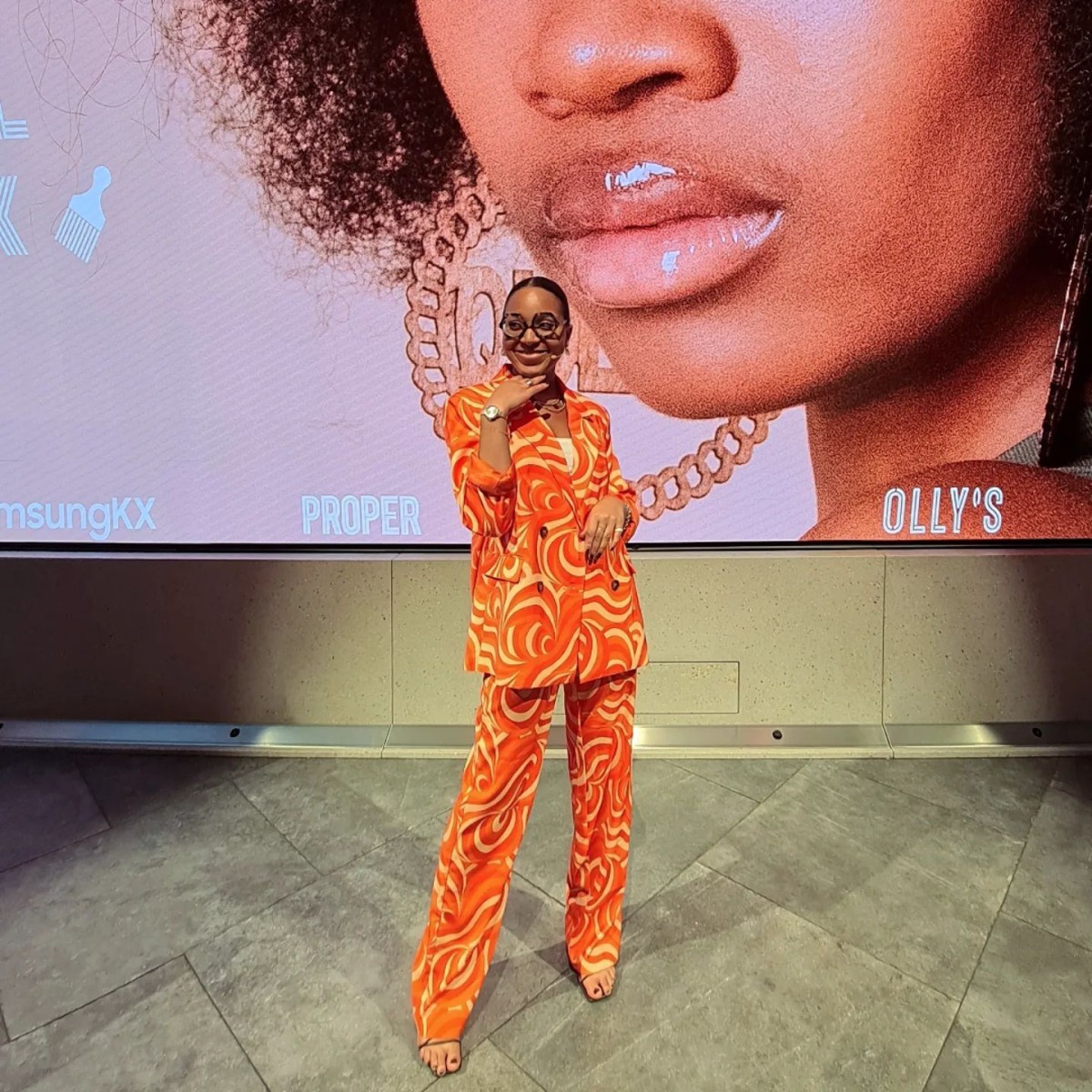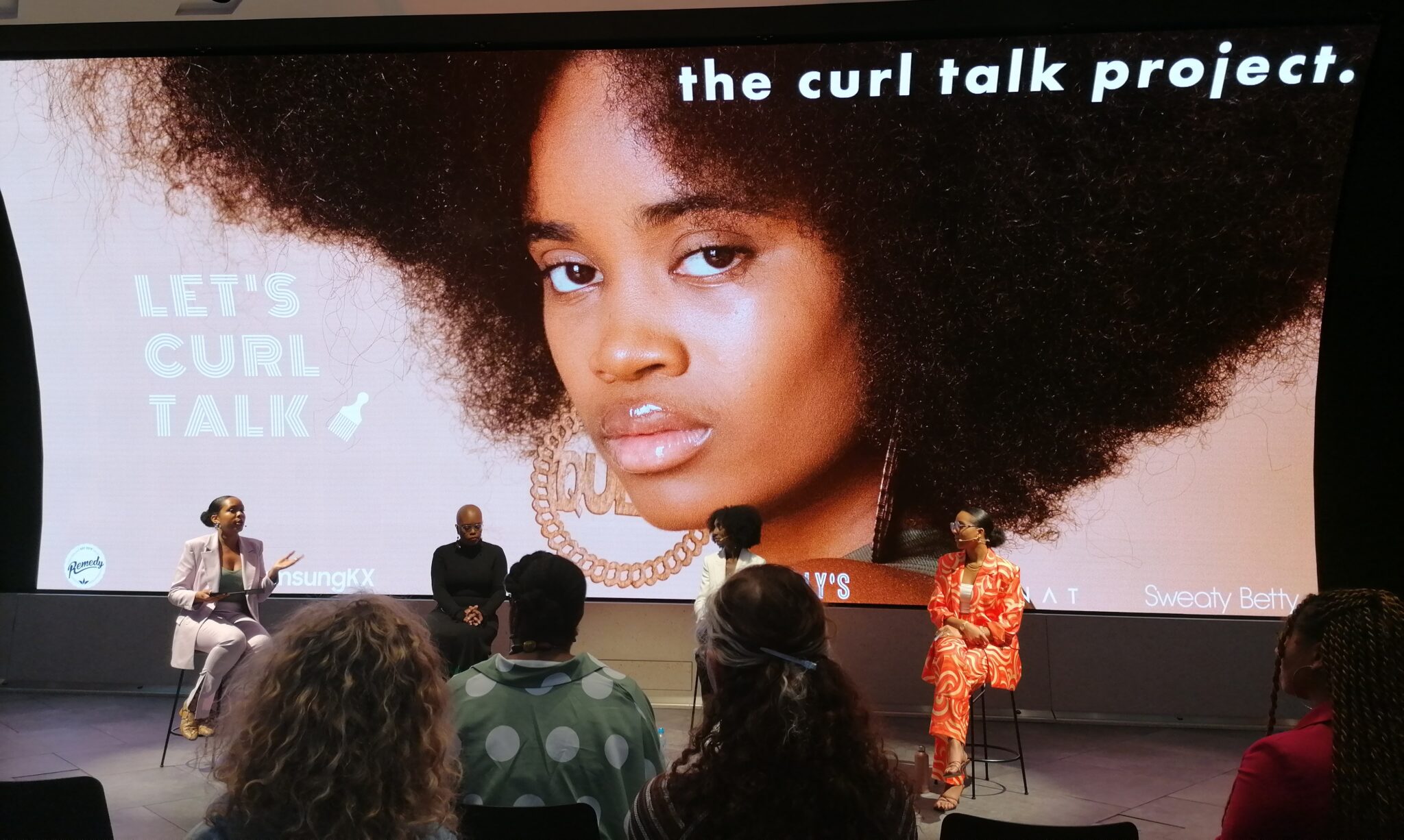When: Thursday 7th April 2022
Where: Samsung KX, King’s Cross
Spring has long since sprung and the girls with curls are ready to release their locs from winter’s protective embrace. For some of us, we’ll fluff out the puff with no question, while others may debate on whether it’s a good idea.
As women, appearance, maintenance and shape are all elements we contend with when it comes to hair. For the kinky and the curly, the concern can pierce a little deeper than we would like it to. Hair extends beyond just the strands and can often evolve into a journey of self-reckoning. This is where The Curl Talk Project comes in.
What is The Curl Talk Project?
Some weeks ago YES GURL attended The Curl Talk Project’s ‘Let’s Curl Talk’ where four businesswomen held a comprehensive discussion on hair and all the tangles that come with it. A delightfully insightful talk on all things kinky, curly and self-care. The panellists included host, Samantha Newell (co-founder of YARD AND PARISH), Johanna Yaovi (founder of The Curl Talk Project.), Zainab Kwaw-Swanzy (author and model), and Gina Atinuke Knight (influencer and founder of Gina Knight Wig Design). This event marked the closing of The Curl Talk Project’s exhibition in Granary Square which ran from 8th March to the 14th April.
A colourful collage of women boasting kinks and curls, The Curl Talk Project is a collection of photographic portraits centring on a diverse range of women who share their stories about the experiences they’ve had with their hair. Created by Johanna five years ago, the project seeks to communicate differing and shared experiences between women. It includes an enriching introspection of what having kinky and curly hair means to them.
‘‘If I wake up and leave the house and my edges are all over the place … and I don’t feel a type of way about that, that’s how we know there’s been progress’.’ – Zainab
Dissecting the meaning of haircare

The discussion was an intricate demonstration of how hair extends beyond care and upkeep. The panel spoke about their experiences with hair loss, the hair industry and how society treats kinky and curly hair. Furthermore, it highlighted the importance of having such spaces to comfortably discuss our experiences with hair in part with our relationships – whether that is with our hair or with others about our hair.
Founder of The Curl Talk Project, Johanna, talked about how she started this creative exhibition. Johanna explained that she was sucked into the natural hair movement of the early 2010s. She described its focus on achieving ‘juicy’ and ‘bouncy’ curls which effectively didn’t look like hers. When reassessing the drive of the movement she pondered: ‘‘I was always like, hold on a minute, this is about Black women trying to embrace their hair, but we’re not talking about the experience that’s related to that’’.
Enter the countless stories of naturalistas who have contended with the comments and racism that came with simply letting their hair be. Out of frustration, she began to ask around speaking to friendship circles and those close to her. Finding common truths in stories she heard, she decided to share them with the wider community. And so The Curl Talk Project was born.
The panel’s perspectives
Samantha coached the discussion with questions that touched on haircare practices, culture and upbringing. One stand-out point she raised concerned adopting hair practices of past generations. She mentioned how ancestors used substances directly from the earth to care for and create their hairstyles. She added the beauty of evolution, that we now have products that allow us to create a multitude of styles.
Gina spoke about her hair-loss journey and her experience with CCCA alopecia – a condition predominantly found in Black women. Gina’s hair loss was overlooked due to racial profiling, which lead to countless misdiagnoses and feelings of embarrassment. Learning more about her condition propelled Gina to start a community promoting research and education on hair loss.
Zainab spoke about the pressure of perfection and accepting that we should wear our hair however we want. She stressed a potential need for re-education. Moreover, discarding the idea of trying to manipulate your hair to emulate someone else’s appearance. Above all, she stressed the need to assess why you want to do what you want to do to your hair and then decide whether it is the right approach.
‘‘From the moment that you start embracing your hair for what it is and you accept that sometimes it will be frizzy, sometimes it will be like dull, sometimes it will be very bouncy like this is how the hair is, like it changes all the time.’’ – Johanna
Main takeaways from the talk
This was a pivotal starting point to thinking about the practices of the haircare industry including the manipulative messages about how to ‘tame’ hair.
Exhibitions like The Curl Talk Project are a way to communicate experiences and think in-depth about our personal hair journeys. It asks what we can do to improve and to feel more confident with our hair in its natural state.
So what exactly was the overarching message? To make sure that whatever you do to your hair, you are prioritising its care first and foremost.
What’s next for The Curl Talk Project?
Johanna revealed that she has been working on a podcast that she hopes will go live in a couple of months. We look forward to tuning in!
Follow The Curl Talk Project on Instagram
Written by Lauren Johnson

